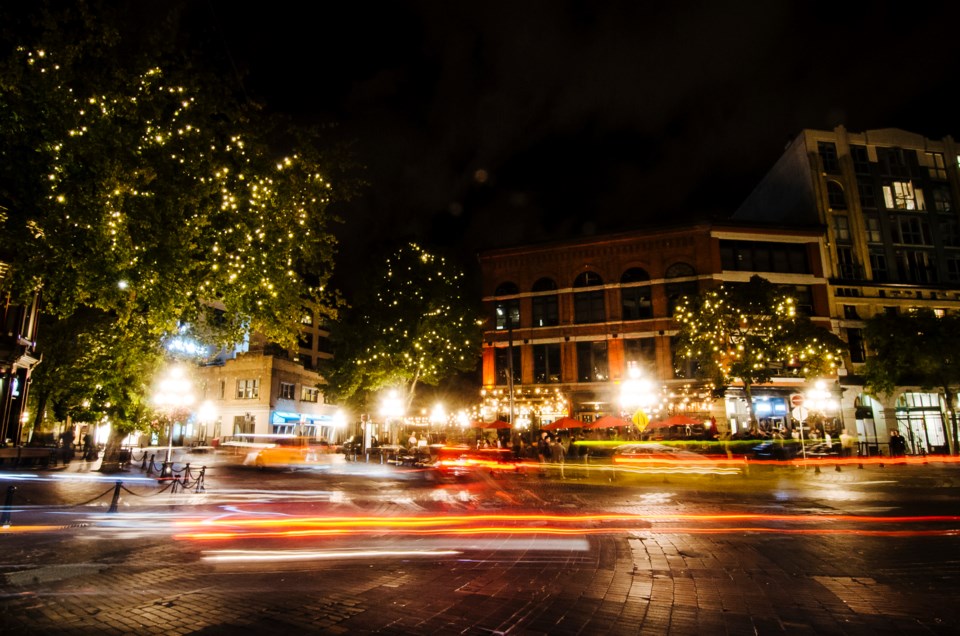For being such a young city, Vancouver has a lot of haunted spots and creepy stories.
Ghostly hitchhikers, spectral audience members, and a phantom conductor all live as urban legends, even though they're not amongst the living. For example, there's the Lady in Red. Perhaps Vancouver's most famous ghost, she's supposedly the intangible remains of Jennie Peal Cox, a socialite from the 1940s.
Along with that come stories of death and disease from the pioneer days, when the city was a fast-growing city with plenty of characters.
So here are five creepy, ghostly, or spooky places and stories you may not have heard before.
1. The 'Most Haunted House in Vancouver' will be redeveloped into condos
In a very Vancouver turn of events, a house often referred to online as the most haunted house in Vancouver has been rezoned.
With stories ranging from it being an ancient burial ground to a more recent matricide, it's got a creepy spot in Vancouverites' minds.
In the physical world, though, it's got an excellent spot for a new development, apparently. In 2021 the city rezoned the property for a 90-unit, six-story condo.
2. The first body sent to Vancouver's cemetery took months to get there
Simon Hirschberg was reportedly a hefty man of around 300 lbs. when he passed away in 1887.
At the time Vancouver was less than a year old and the brand new, unused cemetery was some distance from the Leland Hotel, where Hirshberg had committed suicide.
Efforts were made to take his remains to the new cemetery. However, it was January and the road was in poor condition. Accounts from the time say rain had turned it into mud and the cart carrying the body broke a wheel.
Unable to go further the body was...stored...near the intersection of what is now Fraser Street and East 33 Avenue.
The myths say that his body is still buried there, but, in actuality, it was moved some months later to the cemetery.
However, because of his layover just outside of the cemetery's boundaries, Hirschberg was not the first person buried in Mountain View. Instead, it was Caradoc Evans, a 10-month-old boy who was carried to the cemetery by his father.
Hirschberg's headstone notes this unusual story.
3. Deadman's Island has seen a lot of death
For such a small spot, Deadman's Island has a lot of history. Before settlers arrived the Squamish people used the islet off of what is now Stanley Park as the resting place for many of their own dead.
Instead of burying people in the ground, the practice at the island was to place them in cedar boxes and put them in the branches of trees.
When settlers arrived in the area, before Vancouver was founded, they, too, used the island as a burial ground.
And when smallpox arrived in the region, those unfortunate souls who caught the disease were sent to the island as a quarantine site; the bodies of those who didn't survive the disease remained on the island.
The island's relationship with death more or less ended there, though. The small piece of land was part of a legal showdown in 1899 between a lumber magnate and the city (the city's first riot act was read as part of the showdown). While the lumber company won and cleared the land, it ran out of money and abandoned the project. Squatters then moved for a spell, and, eventually, it became a naval reserve.
4. Gaoler's Mews and hauntings in Gastown
First, it's pronounced JAY-lr. Like Jailer.
Second, Gaoler's Mews in Gastown has likely spurred on a number of the neighbourhood's ghost stories. It's next to where the city's jail was set up in Vancouver's earliest days.
Back then capital punishment wasn't just a punishment, it was public. The courtyard is reportedly where the hangman set up, and some 40 people were killed at the site with a noose around their necks.
Since then more than a few ghostly sightings have been reported in the area. In particular, the former site of the Irish Heather (before it moved) was popular with locals, both of the physical and spirit realms.
A woman in black, said to be a widow, has also been spotted drifting through the area.
5. The police museum has some truly creepy artifacts
One of the lesser-known museums in Vancouver is the police museum.
While not all crimes are creepy, the museum has plenty of spooky facets. For one, it's located in the city's old morgue, and the original autopsy suite is now an exhibit.
There are also items from some of the city's most famous murders. That includes skulls, clothes and murder weapons (like an axe used by a teenager in a five-person homicide).
Bonus: The origins of Blood Alley Square's name
Blood Alley has a gory name, but its history isn't specifically linked to anything particularly gruesome.
According to Elizabeth Walker's Street Names of Vancouver, it was officially named in 1972 and says it used to be the scene of "blood-spilling fights" and drunken brawls. While there are stories of butcher shops slaughtering animals there, local history expert John Atkins says that wasn't so.




